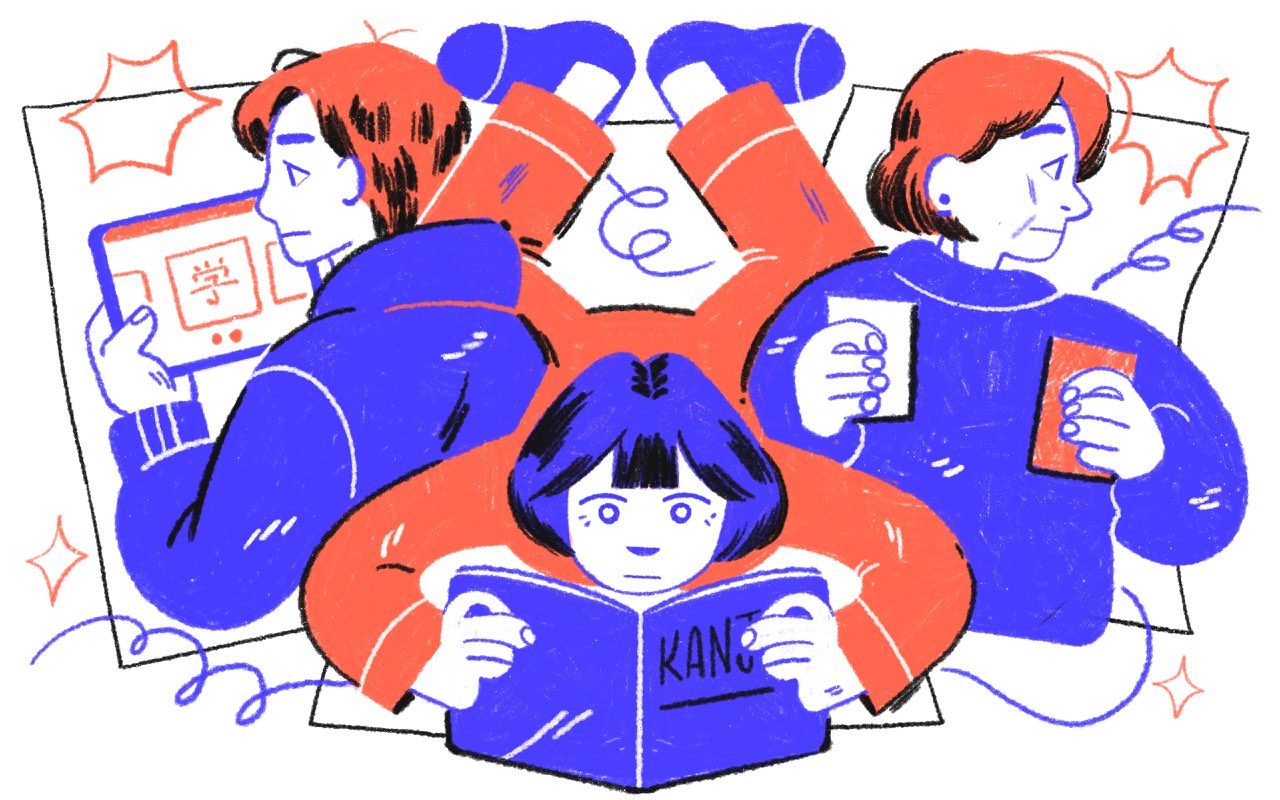Discover how bringing cooperative learning strategies to your classroom can improve peer relationships, classroom culture, and student achievement.
The most valuable experiences in a student’s life involve teamwork and collaboration. Whether it’s playing on a winning soccer team, preparing a musical performance with an orchestra or choir, or working on a group project to present to the class, being able to depend on peers — and being dependable themselves — is a skill that students will use throughout their educational, personal, and professional lives.
How can you foster collaboration skills in the classroom while still focusing on independent learning and growth? Discover how to use cooperative learning strategies in any grade with a collection of low-prep resources and instructional tools. These collaborative activities may be what students remember most from your class and can be important foundations for team-building and lasting friendships.
Table of Contents
What is cooperative learning?
Cooperative learning is an educational environment in which small groups of students work together to achieve success. These students share a common goal (a good grade, a strong performance, or mutual learning) and often involve a curriculum that includes both long-term projects and short-term assignments ideal for group settings.
Cooperative learning moves away from competition-based learning strategies and into scenarios where everyone benefits from working together. However, there’s still room for healthy competition between groups or classes in a collaborative learning setting! As long as everyone in a group knows how to contribute, the cooperative learning class community can be a positive one for all involved.
Benefits of Cooperative Learning
The best cooperative learning strategies mirror a society that works together to serve everyone in the community, allowing individuals to share their skills and knowledge with each other in helpful ways.
Common benefits of cooperative learning include:
- Increased interpersonal social skills
- More confidence in public speaking
- Individual and group accountability
- Better active listening and problem-solving skills
- Positive classroom culture
- Higher mastery of core subjects
- Better assessment scores
- Structured time for kids to socialize
- Higher academic confidence and self-esteem
- Friendships across heterogeneous skill levels
- Increased leadership and team-building opportunities
Types of Cooperative Learning
While you may find opportunities for cooperative learning throughout the day in any grade, there are three main types of cooperative learning that work in elementary, middle, and high school.
- Formal cooperative learning involves a structured learning environment in which students take different roles in long-term projects, follow instructional frameworks to complete cooperative learning activities, and assess their own and each others’ contributions and effectiveness within the group.
- Informal cooperative learning uses small groups and informal assignments to establish the importance of working with temporary teams. This format is more discussion-based than a formal setting, allowing students to hone speaking and listening skills as they summarize their group members’ perspectives to come to a mutual understanding.
- Cooperative base groups are standing groups of students who work together throughout the year on short-term, long-term, and spontaneous assignments and discussions. Students work in their groups over the course of the year and keep each other accountable in both projects and everyday instruction.
Teachers who implement cooperative learning in their classrooms usually use some form of all three models. They may have standing groups that meet periodically, as well as spontaneous groups for discussing lessons and assigned groups for completing long-term projects.
Cooperative Learning Strategies for the Classroom
So, how do you bring this learning style into the classroom? Use cooperative learning activities that build on and innovate classic cooperative learning strategies, as well as assignments that scaffold the process and encourage reflection on the group itself.
1. Set up activity stations to reinforce cooperative learning
Nothing works better for small groups than learning stations! Have students rotate through stations that reinforce collaborative learning strategies and teamwork to finish a series of short-term projects that are adaptable for any subject or topic.
Activity stations work well in elementary school once learners can work somewhat independently, and in middle and high school when you have enough time in a class period for groups to do an entire rotation.
Cooperative Learning Activities Using Sticky Notes
By Ford’s Board
Grades: 3rd-9th
With sticky note activities like Fact or Fib, Guess My Word, and Picture That, this resource includes many opportunities for students of all ages to answer questions and solve problems with their peers.
2. Use think-pair-share for quick discussion topics
You probably already use this collaborative activity without realizing it’s an example of cooperative learning. Using an “elbow partner” (a partner located near their seat), students first think independently about a topic, then discuss their opinions in a one-on-one conversation. Students then share each other’s viewpoints with the rest of the class. This strategy works from the first day of kindergarten to the last day of senior year, and especially well in classes that love to chat during transitions!
Think Pair Share by Wishful Learning
By Wishful Learning by Beckie Lee
Grades: PreK-2nd
Subject: ELA, Speaking and Listening
It’s never too soon to start practicing think-pair-share in class! This CCSS-aligned activity includes anchor charts, mini-lessons, and teaching strategies to encourage young students to use this important skill when sharing their ideas with peers and with the whole class.
3. Build collaboration skills with a jigsaw activity
Jigsaw activities are popular ways to get groups working equally and sharing information. Each member of a group goes to a station in class to research or learn something about a particular topic, then returns to their group to share what they’ve discovered. Each group now has a complete set of data to work with in their project!
Use jigsaw activities in elementary school when teaching about research techniques, and in middle and high school when research materials may be too dense for individual students to handle themselves.
Jigsaw Activity Template, Cooperative Learning Note Taking Strategy
By Tess the Crafty Teacher
Grades: 3rd-5th
Help elementary students master the art of working together with a versatile jigsaw activity resource. It includes editable planning sheets, note-taking pages, and graphic organizers to guide young learners through the process of putting information all together.
4. Assign roles to help all students contribute
You’ve heard it over and over: “My group isn’t doing any work!” Prevent lopsided group effort and enable everyone to contribute with assigned group roles. Younger kids work on delegating the jobs and duties, while older students use the roles to assess how effectively the group is working together.
Group Work Role Cards Expectations Accountable Talk Posters Cooperative Learning
By The Primary Diary
Grades: 1st-5th
Subjects: Classroom Community, English Language Arts
Standards: CCSS SL.1.1, 1a, 1b, 1.3; SL.2.1, 1a, 1b; SL.3.1, 1b, 3, SL.4.1, 1b, 1d
When students have a job to complete, they work even better in groups. Use a resource that includes editable slides, role expectations, and sentence stems to enhance students’ speaking and listening skills and to keep them focused during group activities and projects.
COOPERATIVE LEARNING- Journal- Roles- Rubric- Assessment-Bilingual dual
By Ideas Clase abc
Grades: 3rd-9th
Subject: Classroom Community
Group work doesn’t come naturally to every student, and especially not every group. Encourage learners to stay on task and work collaboratively with roles like Task Manager, Materials Manager, Speaker, and Scribe assigned to keep the project moving on track.
5. Implement peer-editing in formal and informal assignments
When students edit each other’s work, they can provide valuable feedback at every point in the writing or assignment process. Hand out rubrics and checklists for students to use when reading each other’s work, and practice giving helpful, actionable feedback that their peers can understand and use. This strategy works for any grade level and likely needs to be explicitly taught at the beginning of the year.
6-8 EDITABLE Peer Editing Checklist – Informative Expository Writing Peer Review
By Sally Hansen – Purposeful Plans
Grades: 6th-8th
Subjects: Essays, Expository Writing
Standards: CCSS W.6.5, W.7.5, W.8.5
These revision checklists have differentiated levels for 3-, 5-, and 7-paragraphs, so you can reach every learner in your class. This standards-aligned resource includes thre print-and-go peer editing checklists already planned and prepped for you.
6. Put students into long-term study groups
Cooperative learning isn’t just for academic skills — it works for study skills, too! Set up study groups for students to quiz each other before an exam, get organized at the beginning of a unit, or share struggles throughout the year. These groups can double as writing groups in elementary school and secondary ELA classes.
Tips for Implementing Cooperative Learning
While you may already use collaborative activities in class, you may not know how to implement the practice of cooperative learning to ensure it’s working efficiently. Follow these tips for bringing cooperative learning strategies to the classroom, no matter the subject or grade level.
- Teach communication skills. Don’t assume students already know how to work with each other! Take time at the beginning of the year to teach and model communication skills, including active listening and how to handle conflict.
- Identify leaders early. Some kids stand out as leaders as soon as they walk through the door, and others need a little encouragement to take the mantle. Identify who is who, and distribute them equally throughout your groups.
- Keep groups small. Larger groups may be too unwieldy to work successfully, allowing some students to move forward without doing equal work.
- Make groups heterogeneous. Everyone brings something different to the table in cooperative learning, and groups should reflect a heterogeneous skill selection (advanced, typical, and struggling learners all in one group, as well as varying levels of leadership and social skills).
- Make groups fair. That said, you’ll need to take measures to ensure advanced students aren’t doing all the work. Role delegation and a focus on equal responsibilities ensure that things are distributed more equally (or that you can see if they’re not).
- Reflect on the process. Both you and the students need to reflect on how well a group is operating regularly. Stay in communication with groups, monitor how they’re working, and make adjustments to group members or cooperative learning strategies when needed.
Coordinate cooperation with TPT
Classrooms operate best when students are learning together. Whether they’re settling into a quick think-pair-share or embarking on a two-month group research project, good cooperative learning strategies can help students learn from each other just as effectively as a teacher in the front of the room (and maybe even more effectively!).
Find more cooperative learning lessons and activities to make your elementary, middle, or high school classroom function at its highest level, and to get kids talking like never before. You can also find ways to bring other thought-provoking strategies to your classroom, including inquiry-based learning activities and assignments.





















